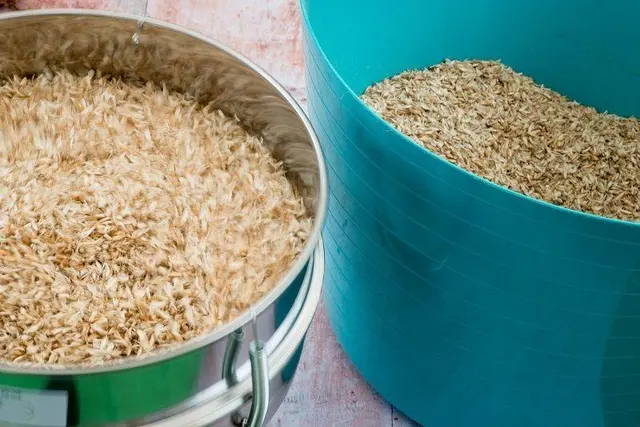Have you ever experienced a sudden allergic reaction that leaves you puzzled, wondering where it came from? Sometimes, the culprit isn’t what’s on your plate. Gluten can hide in surprising places around the home – in everyday items you might never suspect. From household products to personal care essentials, these items can trigger uncomfortable reactions, making it feel like your allergy is playing tricks on you.
In this article, Nadine Hummert – Kenilworth local and the founder of luxury sustainable lifestyle brand Equilibrium Lifestyle – draws on her extensive experience in carefully sourcing materials for upholstery, and her background in health and wellbeing to share why the products and materials in your home truly matter. Understanding these unexpected gluten exposures can help you take gentle control and create a safer, calmer environment for your wellbeing – because true care means embracing all the little details of daily life.
What materials should I be avoiding?
Non-organic cotton blends: While not a direct gluten source, cotton blends can harbour dust mites, which may be an issue for those with sensitivities. Conventional cotton production involves the use of chemical fertilisers and pesticides that can leave residues on the cotton fibres. These residues may cause skin irritations and allergic reactions in individuals with sensitivities. Organic cotton fabric, on the other hand, is free from such chemical residues, making it a safer and more comfortable choice.
Spelt husk: Often marketed as a natural, organic “ancient grain” – spelt is more than just a food ingredient. Its husks, the hard outer shells of the grain, are commonly used in meditation cushions, neck pillows, heat wraps, and even pet beds, thanks to their breathability, mould resistance, and hypoallergenic reputation. But here’s what’s often overlooked: spelt is a form of wheat, and those husks still contain gluten. While they’re cleaned and dust-filtered during processing, they’re not food-grade – meaning they may still carry trace gluten particles. For those with sensitivities, this can lead to reactions through touch, inhalation, or even hand-to-mouth transfer. So, while these fillings are praised for being natural and dust-free, they may not be as gentle on gluten-sensitive bodies as they seem.
“We choose organic cotton for our products because it’s gentler on the skin and better for the environment. When it comes to fillings, spelt husk is a popular option for its breathability and structure – but it’s not ideal for everyone. For those with gluten sensitivities, we often recommend switching to buckwheat as a safer alternative. It’s all about finding what works best for your body and your space,” said Nadine.
Top tips for avoiding a reaction
If you’re managing a gluten allergy, it’s worth taking a closer look at what’s inside your soft furnishings and other regularly used items in your home. Start by checking the filling: spelt, wheat husk, barley hulls, and even oat hulls can all contain traces of gluten.
Opt for naturally gluten-free alternatives like buckwheat husk, kapok fibre, organic linseed or organic cotton. Using washable, sealed covers can help minimise contact and keep stray particles contained, while regular airing and surface cleaning helps reduce buildup. Always double-check labels and don’t be afraid to ask what’s inside.
What materials are safe for me to use?
In all cases, it’s important to stay mindful of the finer details. Some cushions use mixed fillings, which can introduce gluten. Even when a product looks natural or handmade, residual grain dust can linger if the filling hasn’t been properly cleaned. When in doubt, look for a “Certified Gluten-Free” label to be sure. It’s these small checks that can make a big difference.
Organic golden linseed: Used in our relaxation eye pillows, organic golden linseed – also known as flaxseed – is a naturally gluten-free seed that’s safe for those with coeliac disease or gluten sensitivity, as it isn’t related to wheat, barley, or rye. Often used as a filling in heat packs, neck pillows, eye pillows, and weighted cushions, flax is loved for its gentle texture, excellent heat retention, and the soft, earthy scent it releases when warmed.
Bamboo: We use bamboo in our reusable makeup remover pads because it’s naturally gluten-free and one of the safest options for those with coeliac disease or gluten intolerance. Although it’s a type of grass, it’s not part of the gluten grain family – so whether it’s used as a fabric or filling, bamboo poses no gluten-related risks. It’s also breathable, anti-bacterial, and dust-mite resistant, making it a gentle, allergy-friendly option for both sensitive skin and gluten-sensitive households.
“Being mindful of the materials we bring into our homes is an important part of caring for our health and the health of our families, especially when managing allergies like gluten sensitivity. At Equilibrium Lifestyle, we believe that true wellbeing comes from attention to the small details – from the fabrics we touch to the fillings we rest on. Choosing natural, carefully sourced materials not only supports comfort but also creates a space where you can truly feel safe and at ease,” concluded Nadine.
For more information, visit https://equilibrium-lifestyle.co.uk/
*Coeliac UK, disease fact sheet 2023
